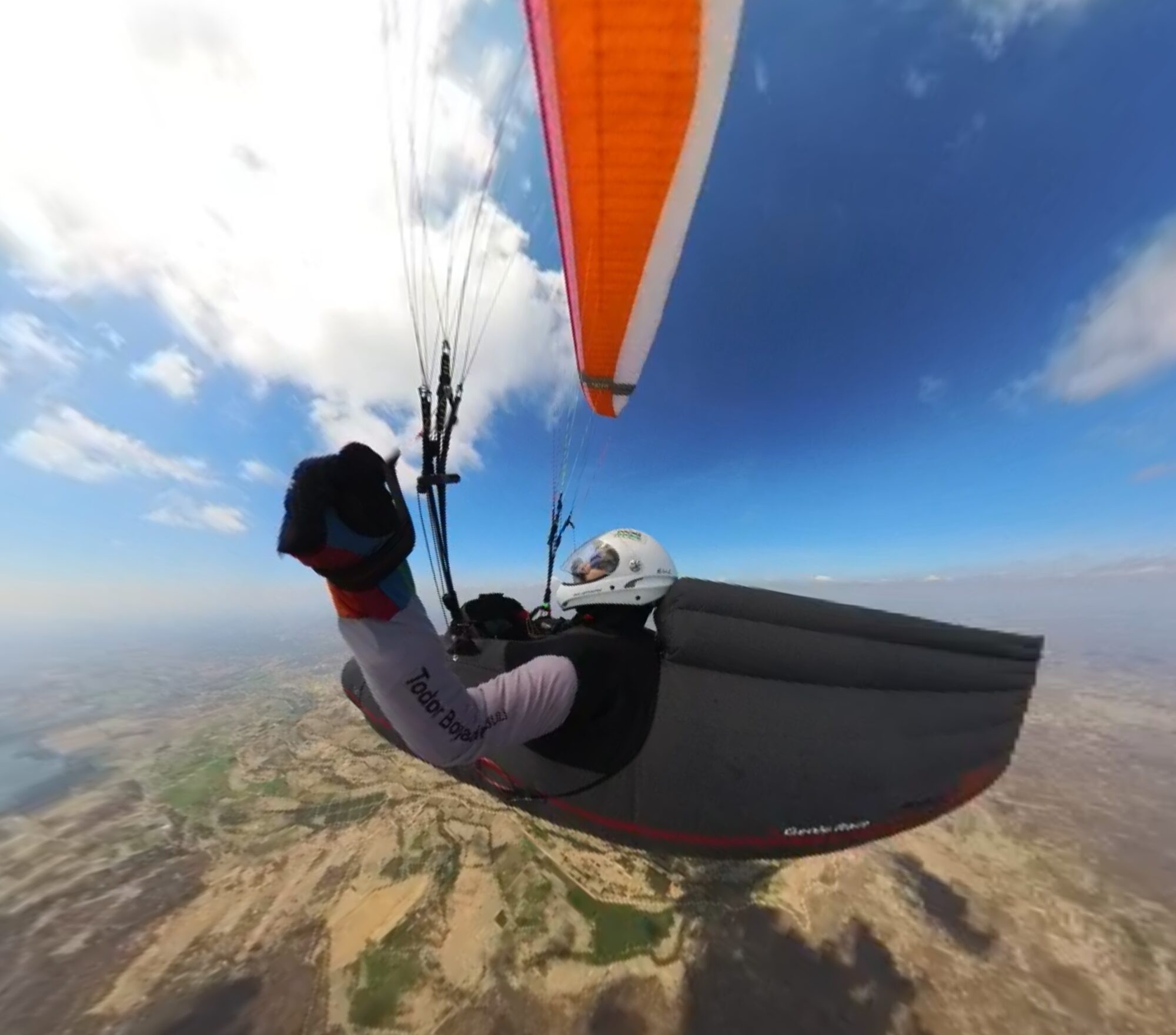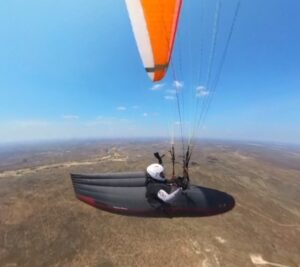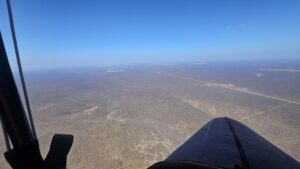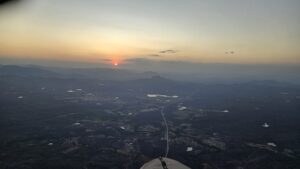
Drinking cup of coffee on the flight back to Bulgaria, I am writing these lines to serve as a diary, in case I ever return to fly in this truly wonderful place for long cross-country flights.
I respect all preferences and hobbies because people are different. My companions and I, who chose Rio Grande do Norte, love to fly long and far. In my opinion, this is the best place in the world for this purpose. The terrain is mostly flat, with a few small mountains around the 300 km mark. The vegetation consists mainly of shrubs and trees without leaves in October and November, with an extremely unfriendly attitude toward landing paragliders—posing more of a threat to the equipment than to the pilot. The so-called jurema covers most of this region—it is difficult to traverse.
The sun here is scorching—it’s the first time I’ve been unable to touch my white helmet after just 30 minutes in the sun. During the day, the heat is indescribable, the dust is abundant, and the light is harsh and unpleasant. People live simply; in the middle of the jurema, there are small, isolated settlements of 5-6 houses—family farms. The locals mainly raise cattle and grow vegetables. There wasn’t a single place I landed without either sheep or cows nearby. These people live in poverty—in simple houses with a single bed, a few hammocks, and a small kitchen. Every time you land, someone arrives on a motorcycle to check if you’re okay, then offers you a ride to their home, water, coffee overloaded with sugar, food, and even a shower—all without knowing you. They take photos with you, send them to friends, even call them to show they have a guest. Every house, no matter how isolated, has Wi-Fi, but mobile coverage is terrible, and there is no signal. We use devices that send our location without needing the internet so we can be retrieved. Out of my approximately 15 landings, I think there was only one instance where I didn’t meet a local. I am amazed at how these people, who have almost nothing, are willing to give you everything they have. They say they don’t need much and live happily—and it really seems to be true.

The only one flying with EN-B and submarine there….
Now, about the flying…
The flights here are technical. You have to survive until sunset to make a good flight. Early launch is a key factor. As soon as the first cumulus clouds appear, the terrain is already working. If you take off too early, around 7 AM, you gain more time until sunset, but you risk sinking out. If you wait too long, you launch in stronger wind but have a better chance of survival. My observations show that the stronger the wind, the better the thermals. Searching for the core is done downwind, not upwind. When there’s no wind, thermals are strong and turbulent. On a weak day, I counted over 20 dust devils, and using them to climb is extremely unpleasant. Thanks to my EN-B wing i consider having greater survival rate during hard days (out of my bulgarian friends group)
The flight goes like this:
- 7–9 AM – Survival mode, cloud base at 1000m, weak thermals.
- 9–10 AM – Conditions improve, cloud base rises to 1200–1500m.
- Around 10 AM – Sometimes a crisis occurs—clouds either disappear or merge into 100% overcast—another survival phase.
- 10–11 AM – Good conditions, thermals become quite strong, 6-7 m/s climbs are no surprise.
- 11 AM–12 PM – The midday crisis. While the 10 AM crisis may be my personal experience, the midday crisis happened almost every day. The pilot must switch from fast flying to survival mode—high altitude and turning in weak lift. The midday crisis punished me many times. Landing at noon is not safe—landing spots are often triggers. I had big collapses right on approach, caused by strong rising bubbles. Choosing landing spots here is the worst I’ve seen. More than once, I was about to land in jurema. I attribute my safe landings more to luck and composure than skill (but to my EN-B glider too). Flying over landing areas has advantages—they are also triggers, and you have an option to land.
After the midday crisis, things improve. Conditions are strong and turbulent—just the way I like them. There are brutally strong climbs, but I wouldn’t call them particularly nasty. In the afternoon, the sun is in your eyes. After several hours of flying, even with good protection, my eyes started watering. I wondered if I was crying from happiness… but no, that wasn’t it.

The last two hours are golden. Lift everywhere, endless glide. For the first time, I understood why knowing the sunset time is crucial. I landed 15 minutes after sunset, and spotting landing areas was difficult. It gets dark very fast. I packed my wing using a flashlight. Good calculations are needed for the final glide. The strong wind is challenging—you need good control and precision when landing backwards.
Among all the pilots present, there wasn’t a single incident. I attribute this to the safety of the winch launch in strong wind (much safer than hill launches) and the experience of the pilots. The flights are difficult and challenging. Sometimes, the terrain looks the same, and if you don’t check your compass, you could fly in the wrong direction. Patience and the ability to switch between fast flying and altitude-saving mode are extremely important.
And last but not least—the company. Everyone who was there went with a passion for flying. We discussed situations, argued, and had fun, but the moral support from friends, the good luck wishes for successful flights, and knowing that you are all together is incredibly motivating.
Thanks to my Mentor 7 I had a great experience and i felt safe.
To all my flying companions – thank you for the support.
I will re-read those things if I ever come back. But I will.
Todor from Bulgaria.
You can check my BRA flights here: https://www.xcontest.org/world/en/pilots/detail:todorbb


Gottbrath Till
Feb 2, 2025 -
Very nice story and stunning flights. Thanks for the post,Todor! 👍
Timon Weber
Feb 4, 2025 -
thank you for this honest and captivating report